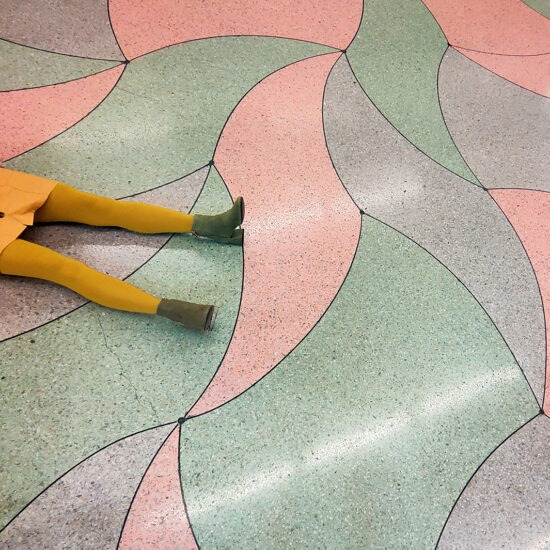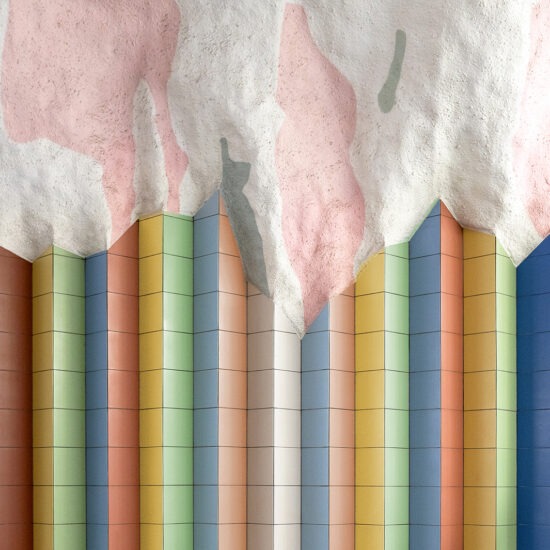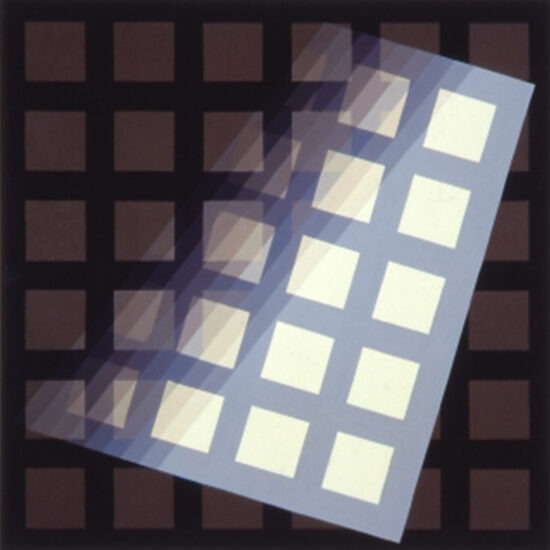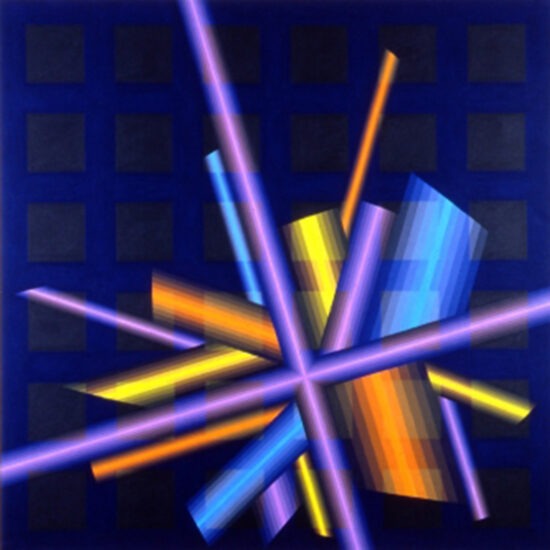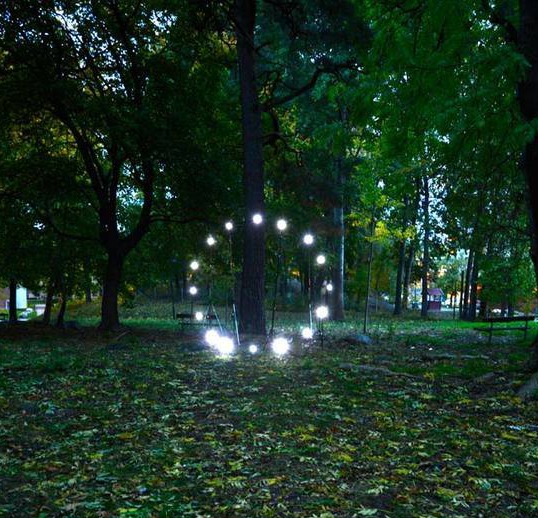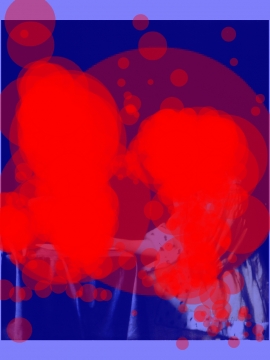The mirrors on the tables give an illusion of transparency. The impression of transparency is a fairly common phenomenon in the modern world of glass and plastic, but it was perhaps less common in our more primordial surroundings. There are “natural” transparencies, however, for instance, ice, water or cobwebs. The illuminated peep-cabinets demonstrate how transparencies can be created.
1. An unexpected encounter between a rubber duck and a brain
2. Meeting at a table
If you are two people, we suggest you sit down opposite each other by one of the mirrors. Try to position yourself so that your body or face overlap those of the person opposite. If you manage, you may get an unusual experience involving a moment of confusion. Perhaps you will have mixed feelings about seeing your own familiar face meet and mix with that of another person. Read more about faces later on.
3. Looking into a black and white world
We can influence our seeing with our will and intention within limits. It is interesting to think about these limits and how they may be built into the architecture of our visual systems. For instance, we probably can’t turn the world into black and white instead of colour through sheer willpower. Nor are there any optic filters that would make this possible. We can, of course, achieve a grey-scale by lowering the lighting so that we only see with our rods (< 1 candela). Then the world looks grey, but we also lose focus.
In this experiment, we can look at a pattern through the gaps in the mirrors and experience it as though through a “grey-scale filter”.
—> Slutrapport Visuella Världar II (In Swedish)
















